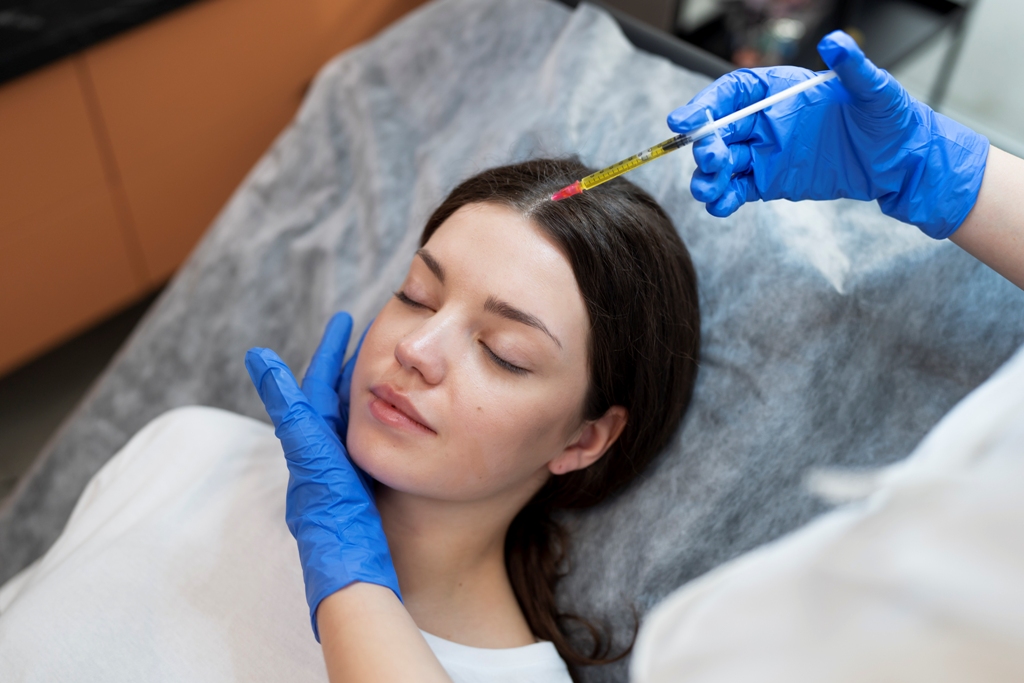Reviewed By: Dr. John P. Fezza
A glance in the mirror sometimes shows more than wisdom lines—it can reveal cheeks that seem flatter than a year ago or lips that no longer frame a smile the way they once did. If that reflection feels unfamiliar, dermal fillers might offer the subtle shift you’re hoping for: a fresher, fuller version of you that still looks perfectly like you. Below is a guide explaining how dermal fillers make you look younger, outlining the benefits of dermal fillers for anti-aging, and comparing fillers with Botox to decide which option—or combination—best suits your face and lifestyle.
Understanding Dermal Fillers
Dermal fillers—brands like Juvederm® and Restylane®—contain hyaluronic acid, a moisture-binding molecule your body already produces. When injected, the gel restores lost volume and smooths etched lines while keeping facial movement natural. Popular targets include
- Cheeks for lift and contour
- Lips for shape and definition
- Nasolabial folds to soften deep “smile lines”
- Under-eyes to ease hollows and shadows
Because fillers integrate with existing tissue, results look authentic rather than “done,” making them a reliable way to look younger with dermal fillers in a single office visit.
Five Key Benefits of Dermal Fillers for Anti-Aging
- Immediate improvement: As soon as the session ends, you see smoother skin and fuller curves, and minor swelling fades within 48 hours.
- Little to no downtime: Treatments wrap in about 20 minutes, and most clients return to normal plans the same day.
- Long-lasting confidence: Results often last six to eighteen months—proof of how long dermal fillers last compared with many topical options.
- Custom, natural look: Micro-doses refine your own features rather than change them.
- Psychological lift: Restored contours can boost self-confidence in professional and social settings.
These advantages underline how dermal fillers make you look younger without surgery, extended recovery, or dramatic change.
Fillers Step-by-Step: From Consult to Glow
- Consult a specialist. Bring older photos to show baseline contours. A seasoned injector—such as Dr. John P. Fezza, MD, renowned for advanced dermal filler techniques—assesses volume loss and symmetry.
- Tailored plan. Product selection and dosage match your anatomy and goals.
- Precise injections. A topical anesthetic minimizes discomfort while a fine needle or micro-cannula places gel exactly where needed.
- Instant volume. Early fullness settles into its final shape over one to two weeks, demonstrating how dermal fillers make you look younger almost overnight.
- Maintenance. Touch-ups once or twice a year preserve results so you consistently look younger with dermal fillers.
Dermal Fillers vs Botox for Aging Concerns
Both injectables fight signs of aging but solve different problems—and often work best together.
Dermal Fillers
- Rebuild structure and replace lost fat in cheeks, temples, and lips
- Fill deeper static folds like nasolabial or marionette lines
- Provide visible volume immediately
- Typically last six to eighteen months
Botox
- Relaxes tiny facial muscles that create expression lines (crow’s-feet, frown lines, forehead creases)
- Results appear in three to seven days
- Effects last three to six months
- Prevents new dynamic wrinkles from etching deeper
Using both addresses volume loss and muscle-driven lines, offering a comprehensive strategy.
How Long Do Dermal Fillers Last?
Longevity depends on filler density, placement, and individual metabolism:
- Lips – six to nine months
- Cheeks & temples – nine to twelve months
- Nasolabial folds – twelve to eighteen months
Healthy habits—hydration, sunscreen, and smoke-free living—help stretch these timelines and showcase how long dermal fillers last with proper care.
Who Should Consider Dermal Fillers?
Fillers suit adults who notice
- Flattened cheeks or temples
- Thin or undefined lips
- Shadowed under-eyes
- Deep parentheses lines around the mouth
They are not recommended during pregnancy, breastfeeding, active infection, or for those allergic to filler ingredients. An expert consultation ensures safety and sets realistic expectations.
Partner With the Right Expert
Skill matters as much as product. Experienced injectors understand intricate facial anatomy, place filler at the correct depth, and mold it for seamless transitions. Dr. Fezza collaborates with Center for Sight dermatologists to deliver a full-spectrum approach that emphasizes subtlety, symmetry, and patient safety.
Ready to Refresh Your Reflection?
Dermal fillers provide a swift, customizable route to younger-looking skin with minimal downtime. If you want firsthand experience of how dermal fillers make you look younger, schedule a consultation with Dr. Fezza’s team. Discover smoother contours, lifted features, and the confidence that follows—often in less time than a lunch break.
Disclaimer: The information provided in this article is for general educational purposes only and should not be considered medical advice. Please consult a qualified ophthalmologist or eye care professional for personalized diagnosis and treatment options tailored to your specific needs.
About Center For Sight
Center For Sight provides ophthalmology, optometry, dermatology and cosmetic surgery services to patients in Southwest Florida. The practice offers patients convenient access to nationally renowned surgeons, highly-trained, compassionate staff members and cutting-edge technology. Center For Sight’s mission is to “bring clear vision to life” through trusting relationships and the unending pursuit of excellence in eye care. For additional information and locations, visit CenterForSight.net.
About Center For Sight Foundation
The Center For Sight Foundation is a donor-advised fund maintained and operated by the Gulf Coast Community Foundation, a section 501(c)(3) organization. The fund is composed of contributions made by individual donors. David W. Shoemaker, M.D., established the Center For Sight Foundation to support the annual Mission Cataract program, which restores vision at no cost for people living at the poverty level suffering vision loss due to cataracts. For more information, visit CFSFoundation.org.







